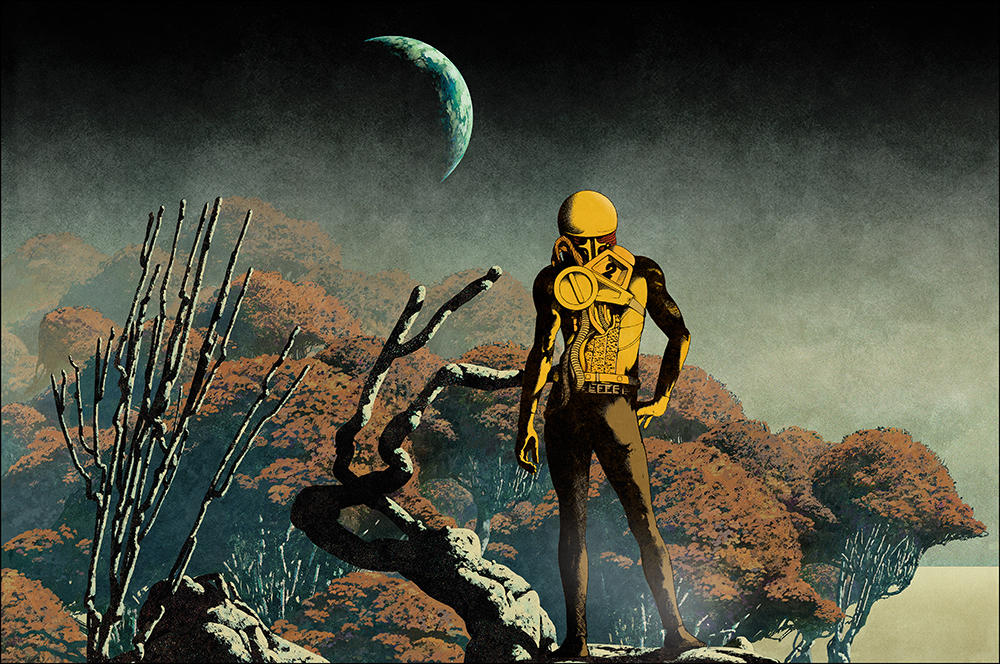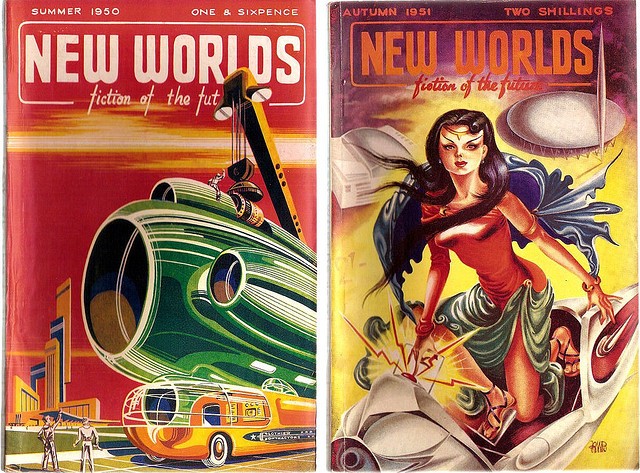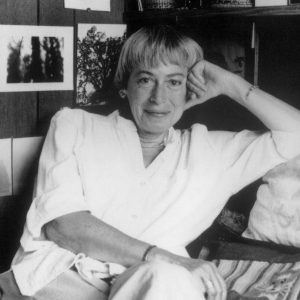
PHOTO: Tumblr
Last time on A History of Science Fiction, we talked about what’s generally referred to as the ‘Golden Age of Science Fiction’. It was an era of new beginnings, including the first Worldcon, the start of cosplay, and the first time we saw SF start to capture the imagination of the general public. It was largely popularized by magazines that published short works of fiction, like Astounding Magazine and Galaxy Magazine, and characterized by writers like Isaac Asimov and A.E. van Vogt.
This week, we’re talking about The New Wave – an era of science fiction where the genre began to closely resemble the SF we know and love today. The genre began to take on existentialism and postmodernism, deconstructing modern society and attempting to show the reader how hollow everything was. It dealt with alternate realities, mysticism, monsters, police states, drug dealers, and aliens. It was here, too, that science fiction and fantasy began to blur closer and closer together.
Dune

PHOTO: the-toast.net
Probably one of the most famous works of The New Age is Frank Herbert’s Dune, published in 1965. Dune is famous for blending the worldbuilding and mysticism of the fantasy genre with the science and political conspiracies of science fiction. It details the religious beliefs, ecosystem, and political intrigues of a desert planet called Arrakis.
The story is set in the distant future. Arrakis is part of a feudal, imperial society. The book follows Paul Atreides, a young nobleman whose family is in charge of Arrakis.
The book was so successful that Frank Herbert wrote five sequels: Dune Messiah, Children of Dune, God Emperor of Dune, Heretics of Dune, and Chapterhouse: Dune. His first novel inspired both film and TV adaptions, and, as of 2009, the names of planets in the book have been adopted for features on one of Saturn’s moons, Titan.
Dune has been immensely influential. It inspired all sorts of television, games, comic books, music, novels, and films – including Star Wars! – and has captured the minds and imaginations of readers and watchers alike ever since its first 1965 creation. It is probably the first and most easily distinguishable precursor to modern novels that blend the hard facts and futuristic settings of science fiction with the magic and freedom of fantasy.
Surrealism and New Worlds

PHOTO: comicsalliance.com
The New Wave first got its name in Britain from the 1960s generation of writers there. They directed the genre toward surrealist themes, psychological drama, and more mainstream areas. It was mostly centered around the famous British SF magazine: New Worlds, or Novae Terrae. It was the leading publication in Britain of its type, featuring experimental and speculative material. Not everyone liked it, though. Some thought it too daring. Others thought it too introverted and pessimistic.
The New Wave was brought to the US through Harlan Ellison’s anthology Dangerous Visions, featuring both British and American authors. His anthology held stories that pushed the boundaries of what might have been acceptable in traditional SF magazines.
Science Fiction in Film

PHOTO: theredlist.com
Arguably one of the most famous science fiction films was published as part of The New Wave, 2001: A Space Odyssey. It was produced in 1968, and was partially inspired by Arthur C. Clarke’s short story “The Sentinel”. It chronicles a voyage to Jupiter with the sentient computer HAL. The film’s riddled with existentialist dialogue, and wonders about extraterrestrial life and human evolution and the place of artificial intelligence in our world.
A Clockwork Orange was another “New Wave” film. It was produced in 1971 as a dystopian crime story, based on the 1962 novel of the same name. It tested the waters of what was and wasn’t acceptable in the science fiction genre, exploring dark themes using disturbing, violent imagery, asking what the dystopian future might look like in the not-to-distant future of Britain.
Most critics liked it. Others had very little good to say about it, calling it an “ideological mess”. Some thought it pornographic. It’s considered one of the first landmarks in the desensitization of violence in modern cinema, and was considered extremely controversial, despite also being considered the 4th greatest science fiction to date by some.
The films of the era offer, perhaps, the most clear-cut picture of what The New Wave really was where the written stories themselves are ambiguous. The New Wave was about pushing boundaries and exploring questions science fiction had yet to look at. It reflected the upheaval and uncertainty of the time, as well as the general mistrust and disillusionment with modern society. The New Wave was, largely, more societal satire than pure, hard science fiction.
Ursula K. Le Guin and Others

PHOTO: rc.umed.edu
One could hardly talk about science Fiction without talking about Ursula K. Le guin. The Portland-based writer is famous for exploring social and biological changes in the world through science fiction. Her writings touch on moral issues, what it means to be human and, for the first time in the genre, bring sexuality to the forefront.
She’s not alone in this, however. Philip K. Dick wrote about the metaphisics of the mind, and writers like Samuel R. Delaney and Theodore Sturgeon actually sought out controversy and confronted it, voicing contemporary political issues, cautionary tales about overpopulation and the apocalypse, and challenging the commonly accepted views about sex.
It became the era of soft science fiction, where scientific plausibility was not the central point of the story. Stories became characterized instead by sophisticated writing, well-rounded protagonists, and fantastic settings, metaphors for contemporary life, and questions about morality and the nature of the human soul.
Eventually, The New Wave would die off in the 1980s, but there’s certainly no denying the huge effect this chapter of SF’s history had on the genre and on our public psyche as a whole.

